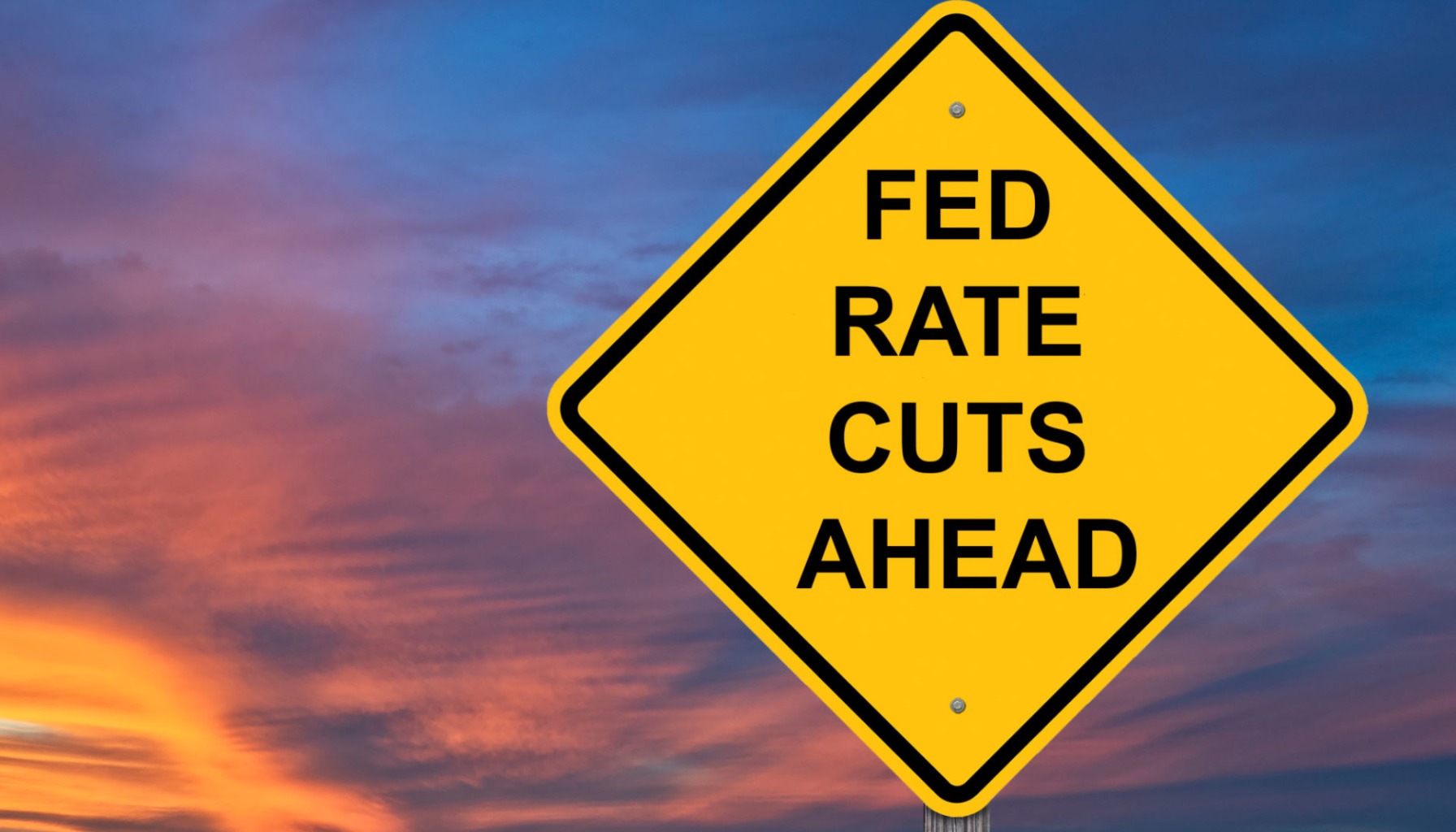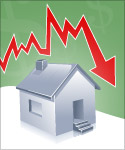The financial world is buzzing with anticipation. Is the Federal Reserve, under the watchful eye of Chair Jerome Powell, gearing up for an interest rate cut next month? Based on the latest market signals, it seems incredibly likely, with odds pointing to a strong 80%+ chance of a rate cut in September. This isn't just a small possibility; it's a strong possibility that could ripple through your wallet and the economy in big ways.
As we head into the crucial September 16-17 meeting of the Federal Open Market Committee (FOMC), every economic report, every speech from Fed officials, and every tick on financial markets futures is being dissected. The original question about an 80% chance is actually a bit conservative now.
Looking at the data as of mid-August 2025, the probabilities are even higher, often landing between a solid 83% and a very convincing 94% for at least a quarter-percentage-point (0.25%) reduction. Powell, while influential, doesn't call the shots alone; the FOMC makes the decision as a group. But his words and the Fed's direction heavily influence these outcomes.
Let's break down what's really going on with these interest rates, the economic signs pointing towards a cut, how we can actually measure these probabilities, what Powell has been saying, and what this all means for you. I’ll share some of my own thoughts and experiences to give you a deeper understanding of this complex but important topic.
Jerome Powell and the Fed: 80%+ Chance of Interest Rate Cut in September
Federal Reserve Data Visualization Dashboard
Historical Federal Funds Rate (2020-2025)
Key Insights
- The Fed raised rates aggressively from near-zero to 5.5% between March 2022 and July 2023
- Rate cuts began in September 2024, bringing rates down to current 4.33% level
- Inflation has steadily declined to 2.7%, approaching the Fed's 2% target
- Unemployment has risen moderately to 4.2%, signaling some labor market softening
- Strong market consensus (80%+) expects another rate cut in September 2025
The Fed's Balancing Act: Understanding Interest Rates
First off, what exactly is the Fed doing with interest rates? Think of the federal funds rate as the main thermostat for the economy. It's the rate banks charge each other for overnight loans. When the Fed adjusts this rate, it affects borrowing costs everywhere – from the mortgage on your house and the interest on your car loan to how much it costs businesses to borrow money to expand.
The FOMC, the Fed's decision-making body, meets eight times a year to look at all the economic information and decide whether to raise, lower, or keep rates the same. For a long time, after the COVID-19 pandemic, rates were pretty much at zero to help the economy bounce back. But then, inflation started to climb really high.
To fight that, the Fed started raising rates aggressively in March 2022. They kept going until they hit a peak of 5.25%-5.50% in July 2023. Since then, they’ve been gradually bringing rates down, and as of mid-August 2025, the target range is 4.25%-4.50%. This slow cooling reflects progress on inflation but also a careful watch for any signs of the economy slowing down too much.
Generally, the Fed cuts rates when inflation is under control and they worry about people losing jobs or businesses struggling. They raise rates to cool down an economy that's getting too hot, which can lead to inflation.
Historically, when the Fed starts cutting rates, they often make bigger moves, maybe 50 to 75 basis points at a time. But today, the talk is mostly about a smaller 25-basis-point cut to bring the rate down to 4.00%-4.25%. Some analysts are even talking about the possibility of a larger 50-basis-point cut if the economic data shows a significant slowdown.
The Economic Clues: Why a Cut Looks Likely
So, what's an economy analyst like me seeing that makes a September cut seem so probable? The U.S. economy in mid-2025 presents a bit of a mixed bag, which is exactly the kind of situation where the Fed might decide to lower rates.
- Inflation is Cooling, But Not Gone: The Consumer Price Index (CPI), which is how we measure inflation, rose by 2.7% year-over-year in July 2025. That’s the same as June, but it's still higher than it was earlier in the year, and notably above the Fed's target of 2%. Core inflation, which strips out food and energy prices, was 3.1%. While this is much lower than the highs we saw in 2022 (over 6%), it's still a bit persistent. This moderate inflation, however, shows that the Fed's previous rate hikes are working, and keeping rates too high might slow things down more than necessary.
- Jobs Market Shows Some Weakness: The unemployment rate nudged up to 4.2% in July from 4.1% in June. It’s been hovering in that 4.0%-4.2% range for a while. More importantly, job growth, which is how many new jobs are created each month, slowed down significantly. We only saw 114,000 nonfarm payrolls added in July, which was less than many people expected. This slight cooling in the job market is something the Fed watches very closely because one of its main goals is to have as many people employed as possible. If unemployment starts to tick up more consistently, it’s a strong signal for the Fed to ease up on rates.
- Economic Growth is Slowing Down: The overall economy, measured by Gross Domestic Product (GDP), grew at a rate of 3.0% in the second quarter of 2025. That’s actually pretty good and better than the first quarter. However, when you look at forecasts for the rest of 2025 and into 2026, most experts predict growth will slow down to around 1.5%. This anticipated slowdown is another reason why the Fed might consider cutting rates now, to help keep the economy moving along smoothly – what they call a “soft landing.”
Taken together, these economic signs suggest a scenario where inflation is getting closer to the target, and the economy is slowing without necessarily falling into a recession. But you can see how volatile these numbers can be; that weaker jobs report in July really boosted the chances of a rate cut.
Reading the Tea Leaves: Market Predictions and Probability Tools
That “80%” figure you might have heard is definitely in the ballpark, but as I mentioned, it’s actually on the lower end of what the markets are showing now. The best way to get a real-time look at what the markets expect is by using tools like the CME FedWatch Tool. This tool looks at futures contracts for the federal funds rate and basically shows how traders are betting on future rate decisions.
Here’s a snapshot of what the probabilities looked like around mid-August 2025:
| Source/Date | Probability of 25bp Cut | Probability of 50bp Cut | Probability of No Change |
|---|---|---|---|
| CME FedWatch (Aug 19) | 82.9% | 17.1% | 0% |
| Bloomberg Analysts (Aug 18) | 90%+ | N/A | <10% |
| Investing.com Fed Monitor (Aug 13) | 91.8% | 8.2% | 0% |
| Barron's (Aug 13) | 90.9% | N/A | 9.1% |
| Growbeansprout (Aug 17) | 83.4% | N/A | 16.6% |
(Note: Probabilities are aggregated and may not sum to exactly 100% across all outcomes in every single reporting instance due to how different sources round and present data.)
As you can see, many sources are putting the odds of a cut at 90% or higher. This consensus is a strong signal, but it’s crucial to remember that these are just probabilities. They can change day by day based on new economic reports.
You see these numbers reflected all over social media, too, with people discussing predictions and linking them to how other markets, like cryptocurrency or gold, might react.
What Jerome Powell is Saying (and What It Means)
Jerome Powell, as the head of the Fed, carefully chooses his words. He’s emphasized that the Fed is “data-dependent,” meaning they base their decisions on the latest economic information. In the Fed's July 30, 2025, statement, he shared that they were keeping rates at the current 4.25%-4.50% level while they “assess incoming data, the evolving outlook, and the balance of risks.”
He pointed out that while economic activity has been expanding at a solid pace, inflation is still “elevated,” and the job market has “shown signs of improving.” Crucially, he reiterated the Fed's commitment to getting inflation down to 2% and supporting maximum employment. He also made it clear that the Fed is “prepared to adjust” its policy if they see new risks.
Powell's upcoming appearance at the Jackson Hole Economic Symposium on August 22, 2025, will be closely watched for any hints about the Fed's thinking. There’s always speculation around these events, from thoughts on future rate cuts to even discussions about his own position at the Fed. While he hasn't said a cut is guaranteed, he's certainly not ruling it out. He’s been pushing back against expectations for very rapid interest rate cuts, suggesting a cautious approach.
Weighing the Risks and What Comes Next
Even with such high probabilities, there are always things that could change the Fed's mind. If inflation suddenly becomes “sticky” again – maybe because of things like new tariffs on imported goods driving prices up – the Fed might delay a cut. Or, if upcoming economic data surprises everyone by being much stronger than expected, they might hold off.
Some people still believe the odds are lower if the economy remains strong, citing times in the past when markets were overly optimistic about rate cuts.
So, what does a rate cut – or no cut – mean?
- For Consumers: Lower interest rates mean it will be cheaper to borrow money. This could mean lower monthly payments on mortgages if you’re looking to refinance or buy a new home, and potentially lower interest rates on car loans and credit cards.
- For Businesses: More affordable borrowing means businesses might find it easier to invest in new equipment, hire more people, or expand their operations.
- For Investors: When interest rates go down, investments like stocks and other riskier assets often become more attractive, potentially leading to higher prices. On the flip side, a rate cut can make existing bonds worth less if their fixed interest rate is now lower than new bonds being issued. A cut can also make the U.S. dollar weaker against other currencies. If the Fed doesn't cut rates, it might mean they are more concerned about inflation or economic strength, which could make the stock market a bit nervous.
The Bottom Line
Based on what I'm seeing in the economic data and how the markets are reacting, the chance of the Federal Reserve cutting interest rates in September 2025 is very high, likely in the 85-95% range. This is driven by inflation that's moving in the right direction, a job market that's showing some signs of cooling, and a general expectation that economic growth will slow down.
However, the Fed’s core principle is to be “data-dependent,” so nothing is set in stone until the FOMC officially makes its decision. Always keep an eye on Jerome Powell's comments and any new economic reports that come out between now and the September meeting. These will be the key factors that could either confirm or change the current expectations.
Position Your Portfolio Ahead of the Fed’s Next Move
The Federal Reserve’s next rate decision could shape real estate returns through the rest of 2025. Whether or not a rate cut happens, smart investors are acting now.
Norada Real Estate helps you secure cash-flowing properties in stable markets—shielding your investments from volatility and interest rate swings.
HOT NEW LISTINGS JUST ADDED!
Talk to a Norada investment counselor today (No Obligation):
(800) 611-3060
Recommended Read:
- Interest Rate Forecast for September 2025: Will Fed Cut Rates?
- Fed Holds Interest Rates Steady for the Fifth Time in 2025
- Fed Projects Two Interest Rate Cuts Later in 2025
- Interest Rate Predictions for the Next 3 Years: 2025, 2026, 2027
- When is Fed's Next Meeting on Interest Rate Decision in 2025?
- Interest Rate Predictions for the Next 10 Years: 2025-2035
- Will the Bond Market Panic Keep Interest Rates High in 2025?
- Interest Rate Predictions for 2025 by JP Morgan Strategists
- Interest Rate Predictions for Next 2 Years: Expert Forecast
- Fed Holds Interest Rates But Lowers Economic Forecast for 2025
- Fed Indicates No Rush to Cut Interest Rates as Policy Shifts Loom in 2025
- Fed Funds Rate Forecast 2025-2026: What to Expect?
- Interest Rate Predictions for 2025 and 2026 by NAR Chief
- Market Reactions: How Investors Should Prepare for Interest Rate Cut
- Impact of Interest Rate Cut on Mortgages, Car Loans, and Your Wallet




